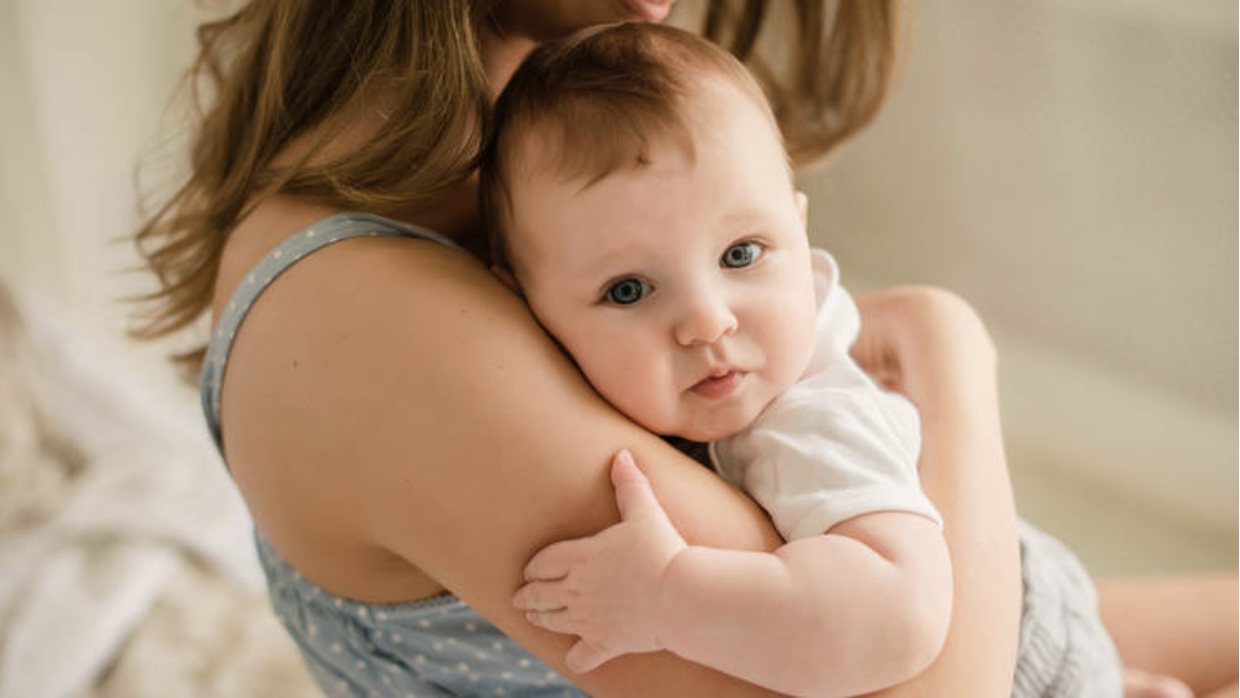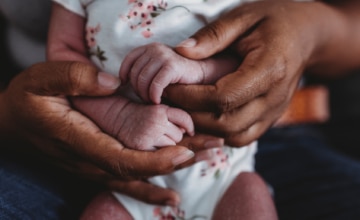Infants and young children vary greatly in their sensitivity to feelings of comfort and discomfort, familiarity and strangeness, and the emotional context in which sensory experiences occur. This article will help parents and caregivers become more aware of individual differences among babies’ preferences for sensory experience.
Healthy babies come into this world beautifully equipped to get acquainted with it and to discover how to use it to meet their needs. They have been hearing sounds within their mothers’ bodies and also sounds that penetrate the womb from the outside world. Babies recognize frequently heard sounds—including their mothers’ voice and their parents’ favorite music—and prefer them after birth, as they may later prefer familiar sights, smells, tastes, and textures. Babies come into the world prepared to enjoy what is novel as well as what is familiar. They pay more focused and intense attention to new stimuli, especially those coming from the human world. A complex drawing receives more concentrated attention than a simple color; infants give their most intense attention to a drawing—or even a schematic approximation—of a human face.
The baby uses its senses both to get acquainted with the environment and to achieve comfort, and every baby goes about this differently. Once I visited a hospital and put three babies in succession back in their cribs after a feeding. One baby relaxed, sucking his thumb. Another kicked at a balloon hanging on the foot of his crib. A third focused on pictures on the wall.
Infants and young children vary greatly in their interest in different sensory areas, in the intensity of their attention to sensory stimuli, and in their sensitivity to feelings of comfort and discomfort, familiarity and strangeness, and the emotional context in which sensory experiences occur. With this article I hope to help parents and caregivers become more aware of individual differences among babies’ preferences for sensory experience.
Eager to Touch, See, and Be a Part of the World
Here are one mother’s memories of the sensory responses of her baby: Carl’s responsiveness was apparent at birth, when he started kicking during an interview between the doctor and me. He had had a natural birth with no anesthesia, and he was very alert, looking all around, looking at himself in a mirror. He reacted to TV changes. At two months, when I brought him a little sheepskin blanket, he wiggled and moved around as if to increase the feelings it gave him. At three months, he imitated my hand-waving.
Some little children are very much interested in the natural world. My seven-month-old grandson would stretch out his hands and arms to catch a sunbeam as he sat on the grass under a tree. His older sister, at nearly two, would happily run with arms stretched out to catch a breeze! Another little child was fascinated with the moons she thought she saw from inside her house. “Two moons!” she insisted, as her grandfather held her first at one window, then moved to the next window. She could not accept his correction – that it was the same moon she saw through the two windows. In other words, perception of a sensory stimulus in the first two years is not clearly distinguished from the context in which it is seen.
Some infants and toddlers find their greatest satisfaction in sensory experience of the human world. At four months, Ellen kicked and laughed in excitement as her adoring grandmother approached her. Jennifer, at the same age, showed bouncing delight when she heard her father’s footsteps. As adults, both women continue to show affection intensely and vigorously.
Even very young children have definite preferences for play materials. Al’s nursery school teacher told his parents to give him playthings suitable for his age, such as blocks. Al already had blocks, but ignored them; he did not care for them at all. He liked colors, in crayons and paints. Kevin, however, loved blocks from his earliest years and later remembered with delight all the things he could do with them—make roads, bridges, houses, whole towns. Blocks were the beginning of his interest in wood, in learning to create tables and other things out of wood, an interest that persisted into adulthood. (Al never developed an interest in making things. He became absorbed in music, then books.)
Continuity of Sensory Interests Across Our Lives
In some cases, a strong sensory interest in infancy is deeply rooted and develops into a life career. This occurred with Kim, who tried at seven months to catch a sunbeam. He continued to be interested in aspects of light. At 13, he longed to make a laser. He read about the process at length and told me wistfully that he knew he could make one, but he didn’t t have the $75 he needed for a ruby rod. I added up birthday and Christmas gifts and gave him the $75; he made the laser. His school gave him an “A” on the project but paid no further attention. The next year, Kim became interested in photography and made photographs of the graduating class. He later entered military service, studying electronics. He continued his self-education until he was lecturing MIT students even though he had not had a college education himself. Kim’s absorbing interest in light in various manifestations predominated over all other interests.
Another child, Jeremy, is typical of those babies who are gifted in certain areas of sensory experience and at the same time have difficulties in other areas. Jeremy was extremely sensitive to touch and resisted having his face washed, nose cleaned, or hair cut. His balance was poor, and he did not walk until 18 months. However, this child loved listening to music and his parents’ conversation. By 14 months he knew 200 words. Jeremy’s parents were not upset by his limitations—they respected them, and tried to avoid disturbing him while they supported his good areas of functioning.
Jeremy’s good language led to early reading and easy mastery of school tasks, while his sensitivity to contact prevented him from getting into body encounters with other children. He was not a fighter, but he was a good actor in school plays. He also has a good voice and as an adult loves to sing and perform.
Attention, Focus and Persistence
The quality of a child’s attention is important because it can give us some insight into what a particular experience means to him. Little Stevie’s way of looking was intense, as if he were trying to fathom the meaning of the object he was observing. This intensity continued as his scientific interest developed, until, as an adult, he was working on microscopic studies of DNA. While some children’s intense interests are related to talents, others have different roots. Louise loved trees. As a baby, she lay in her carriage watching sunbeams shining through their branches. This pleasure continued into adulthood, as she watched the shifting sunlight in trees around her country house.
Babies differ in the number of their intense interests. Al was absorbed in music; Molly was intensely interested both in music and in colors; Midge loved music and colors and rhythmic movement. All of these children were gifted in these areas.
Not surprisingly, parents and grandparents are sometimes especially alert to the special quality of a baby’s attention. The mother of a two-day-old baby was holding her as the baby gazed intently at her mother. The grandmother said, “She doesn’t look at me like that – I think she recognizes you.” A two-month-old baby stared intently at his hands, twisting and turning them as his parents and their pediatrician talked. His mother commented, “He has just discovered his hands.”
Often, the excitement of a sensory experience arises from a baby’s ability to control it. In the early months, mobiles suspended in the crib are interesting because they move or make a sound when the baby touches them. As soon as a baby can sit up in a tiny bathtub, floating toys that move in response to the infant’s splashing are a source of delight. The eight-month-old in a high chair soon discovers the fun of grasping a spoon and dropping it over the edge of the tray, retrieving it by a string or having it restored by the caregiver (of course, at this age, games of disappearance and reappearance are fascinating.)
Familiarity and Strangeness
Sensitivity to strangeness can be either a response to something that is actually strange—that is, completely different from what the child is accustomed to—or it can be simply a response to a new experience. For some children, nothing feels strange; for others, every new experience, every new person, is strange.
Adults may easily underestimate young children’s ability to discriminate between the familiar and the strange. At eight months, our baby boy loved a Czecho-Slovak dance record and wanted to hear it over and over. At three years, he asked his grandmother to play a “Beethoven record.” But when she put on the Fifth Symphony, he whimpered, “I wanted the Sixth Symphony!”
The same stimuli can be experienced differently by different babies. Sudden noises—an automobile honk, a doorbell, a slamming door—are a source of curiosity for one baby, a cause for alarm for another. Some babies sleep comfortably anywhere; others are restless unless they are in their own familiar crib. A six-week-old baby boy refused to nurse after his mother had been jogging. The exercise had produced lactic acid, which is secreted into the milk and affects its taste. When this mother gave the baby previously pumped milk, he accepted it.
Some babies seem instantly at home in the world. A three-month-old who visited me in my home for the first time laughed joyously, as if I were a beloved old friend. In contrast, Nina was a sensitive little thing. Sitting in the curl of her mother’s right arm, she looked wide-eyed at the incomprehensible world, which never seemed to become more comprehensible. Her wary expression never relaxed.
How Adults Influence Babies’ Sensory Experiences
As an active baby reaches to touch objects in the environment, he encounters things that give him pleasure or pain. He learns what is “out there,” and he also discovers what he likes and dislikes. Babies experience feelings of pleasure and pain in different areas, and at different levels of intensity. Steve was very sensitive to textures as a tiny boy—any woolen pants had to be lined to protect against the feeling of the wool. At the same time, he loved soft surfaces, such as that on a fuzzy teddy bear.
Some babies are not very active—they don’t reach, grab, or play—but they do spend a lot of time watching everything that goes on and listening to all the sounds they can hear. When a baby stares or watches quietly, he is taking in a great deal. We may say, “He doesn’t miss a thing.” Some preschool children spend a great deal of time in any new situation surveying all of the possibilities. When they go into action, they are selective, using observations they have stored up. The quiet child who takes in everything may reflect what has been going on in his mind in his creative productions; these may be more original or more complex than those of the active children.
The baby’s parents and other caregivers restrain or encourage her in her active exploration or quiet observation of the world. When the infant finds books to pull out of the bottom shelf of the bookcase, a concerned grownup may replace the book with a “No! No!” and a shake of his head. But when the child pulls out pans from the low cupboard in the kitchen, she is greeted with approving smiles. The baby is reproved when she puts certain things into her mouth to explore by licking or biting. Yet her smearing baby kisses on mother’s hand are greeted with her kisses and smiles. In these and other ways, the baby’s world is shaped—she learns to use her senses selectively, in ways approved by her culture.
Sensory Experience and Development
The senses constantly guide, stimulate, and reward the actions of the baby. Senses and motor skills cooperate. Neither can function without the other. Looking depends on movement of the eyes from birth, and soon, the head and body, as the baby turns or stretches to see new objects, or to hear a new sound.
As babies watch and listen to what goes on around them, they soon go beyond a reflex reaction to participating with greater awareness and planning in what they see, hear, touch, taste, and smell. They discriminate between shapes and sounds and learn what to expect and what to reach for. They formulate whole images by synthesizing sensory information. In time, toward the end of their first year or early in the second year, they connect these images with words, so they can begin to ask for what they want. But the process of connecting words and images is much slower than the development of the images themselves. The baby recognizes mother long before he becomes able to call her.
Sensory experiences tell us who we are and where we are. The accumulation of images seen and heard, tasted, touched and smelled build a complex image of his surroundings in a little child’s mind. Even a very young child invests a new sensory experience with personal meaning. “Granny!” was the enthusiastic greeting of a three-year-old I had never met before when, in my sixties, I visited her family. The child saw that I was an old lady, a “granny.”
What the child has enjoyed most in the earliest years of life may be deeply cherished and held in long memory. Some adults re-create their earliest sensory experiences in music, painting, and literature. Some continue or elaborate their early sensory experiences in their occupations, domestic arts, and religious observance. Some guide new generations of babies and young children as they explore the comforts, delights, and wonders of the world.
This article was edited from the Zero to Three Journal. To browse article or subscribe to the Journal, click here.
By: Lois Barclay Murphy, Ph.D., with Rachel Moon, M.D., Washington, D.C. Edited from the Zero to Three Journal




